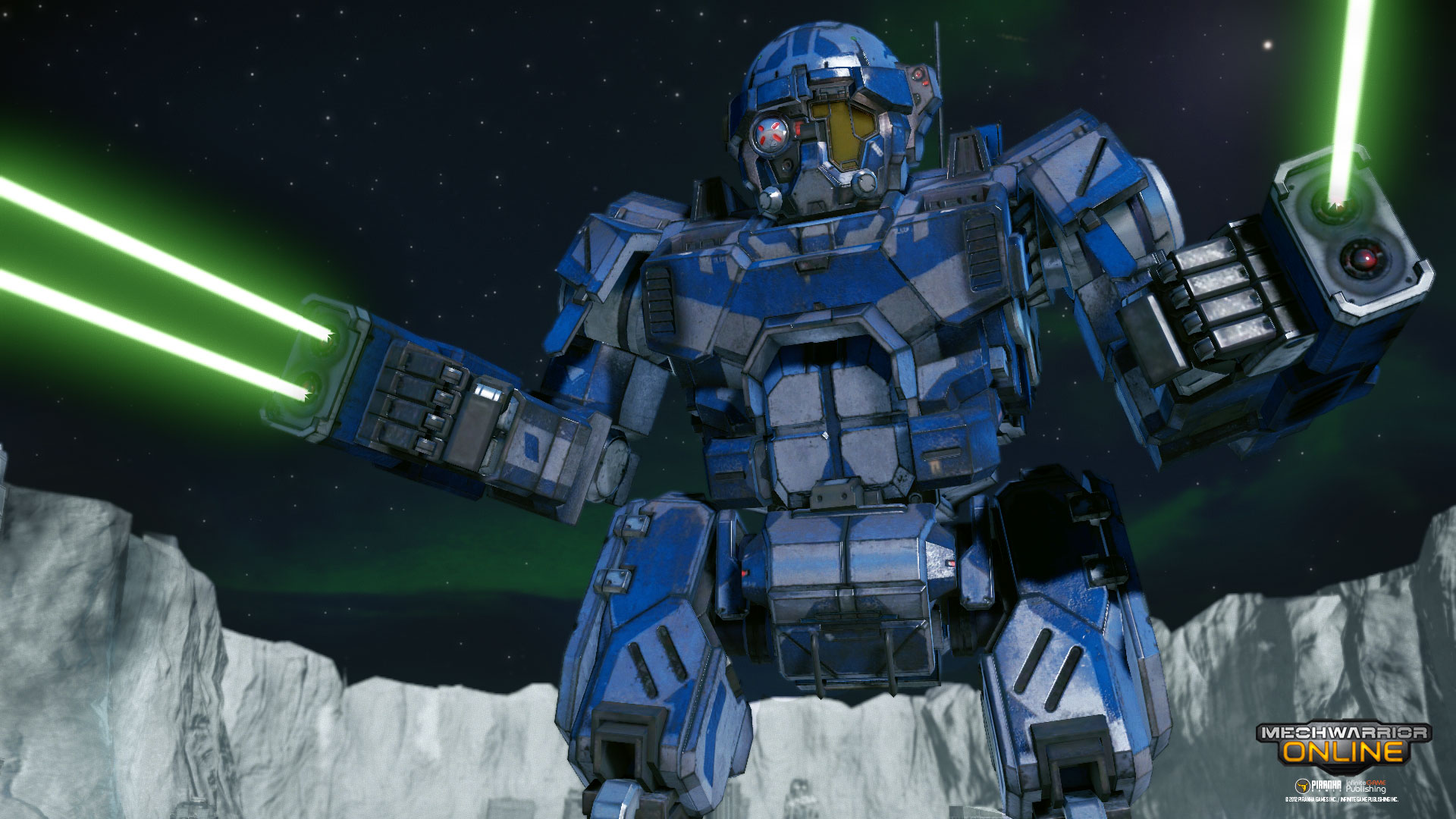 |
| This Commando just got more annoying |
Eureka!
I finally found a compelling reason to use Throttle Decay, at least for lights. Have you come across those annoying Jenners and Locusts that lurch forward from cover, immediately dump their lasers on you and get back in the cover before you can react? Have you ever had a Locust that used that "stutter step" tactic, taking random steps forward and backward right in front of you, throwing off your aim? Well, I have and very often. This is a risky tactic for a light, but when you have your flanks covered it's really effective. You can dance in front of your opponent while he struggles to keep his weapons on you. The best Locust and Jenner pilots seem to be the masters of these movements.When I tried the same tactics myself with my Locusts, I just couldn't get it right. Even though the Locust has massive quirks to acceleration, I just didn't seem to take advantage of those. It felt sluggish, as if the quirks weren't there. Stopping and accelerating still seemed clunky and people had no problems nailing me when I poked. That's why I adopted a more mobile gameplay for my Locusts, with the motto "speed is life" and never stopping in combat other than absolutely necessary.
Until yesterday. After being nailed by an AC20 while attempting this maneuver, I randomly decided to enable Throttle Decay and see what happens next. Holy crap! The difference in responsiveness was like night and day. Suddenly I could pull off insane snapshots without leaving any time for return fire. Since now I didn't have to adhere to my "never stop" tactic, I didn't need to run around and attract attention. This boosted my damage and survivability by quite a lot and it felt like I finally found that puzzle piece that made the lights feel "right".
Why does it feel so different?
What's the difference then? Well, it's hard to explain with words. Before showing you the videos, I'll attempt one though.The problem seem to stem from how the non-Throttle Decay throttle system is implemented. Normally, when you press W you see a green bar and a golden bar increase/decrease in your speedometer. The green bar sets the speed you want to go at, while the golden bar indicates your current speed. The green bar is only affected by how long you press W, while the golden bar is actually affected by physics such as the acceleration stats of your 'Mech, current elevation you're climbing and if you're legged or not. Everything is normal here.
However, this system seems to have been designed with bigger 'Mechs in mind. The green bar has a set acceleration for itself, so it won't immediately jump to the max/min speeds and allow you to fine tune the speed. The set acceleration of this green bar is the problem. Some 'Mechs actually have better acceleration than the green bar itself. What happens when you try to accelerate with these 'Mechs is that you never see the green bar at all, since the 'Mech itself has more acceleration. You end up missing your acceleration potential and the 'Mech feels sluggish as a result.
When you enable Throttle Decay, the acceleration of the green bar is non-existant. When you press W, it immediately snaps to the end of the bar while when you press S it snaps to the bottom end. This allows you to take advantage of the acceleration of your 'Mech.
Take a look at the following comparison:
Max-Min speed WITHOUT Throttle Decay
Max-Min speed WITH Throttle Decay
In the first one, the green bar is not visible at all. The Locust simply accelerates too fast for the old throttling method. In the second one you can see how the green bar immediately snaps to the extremes and allow you to use your acceleration/deceleration potential.
The result final result is you need significantly less travel distance to achieve max/min speeds. Let's see the difference in a simple poking maneuver.
Poking WITHOUT Throttle Decay
Poking WITH Throttle Decay
I have also tested it with other lights and I can safely say that all of them benefit from enabling TD.
So what?
As a long time non-TD pilot, this changes a lot of things for me. Not only poking is better, you also get a lot more responsiveness out of your 'Mech. Trying to stay behind an enemy 'Mech for example, is much easier with TD. Since you accelerate/decelerate faster, the enemies will also have a hard time keeping their crosshairs on you. I'll upload sample gameplay videos showcasing these when I have the chance.
Conclusion
Some of you probably know it already, but I was pretty excited when I found out about this myself. The limitations of the standard throttle method isn't very well known, and if you never bothered with TD like me, you're probably unaware of them.
It's probably not useful for every light and gameplay style, but as it stands, I see no reason not to play lights without Throttle Decay at all. TD is just better.
On this note, PGI can actually look at ways to improve the standard throttle method. It's definitely not made for lights (and quirked lights especially). If the green bar's acceleration at least matched the 'Mech acceleration automatically, we'd solve the acceleration problem while still retaining superior control.
0 comments:
Post a Comment